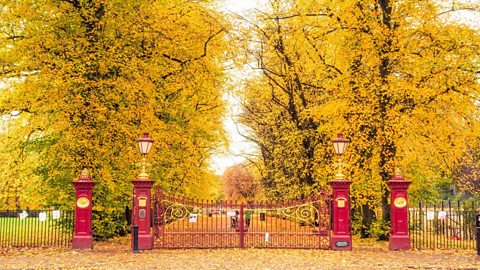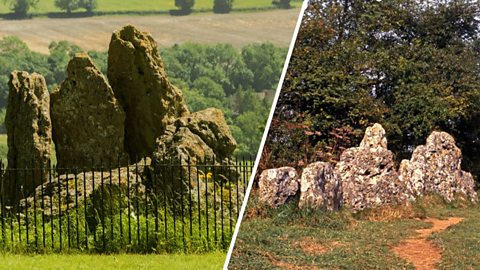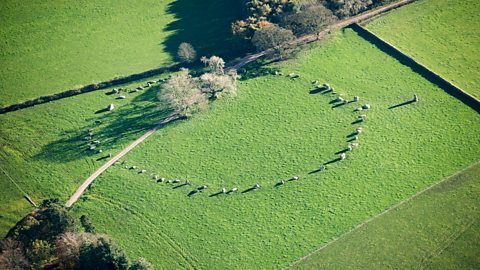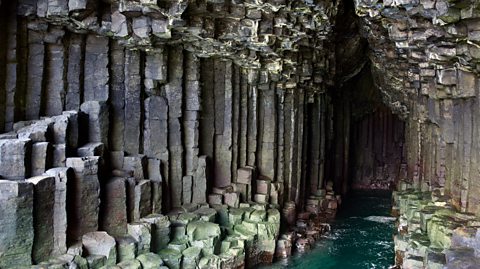From a 325 million year old fossil tree to mysterious stones, the UK is full of interesting prehistoric areas that you can take a trip to.
When you think about prehistoric places in the UK, Stonehenge is probably the first spot that comes to mind. However, there are hundreds of sites across the British Isles that stretch across the Stone Age, Bronze Age and Iron Age.

Beaghmore Stone Circles, County Tyrone
Located at the foot of the Sperrin mountains in County Tyrone are seven circles and 10 rows of stones, placed in a puzzling way.
It was in the late 1930s that 1,269 stones were discovered and, alongside segments of flint tools which have been carbon dated, it is believed that the area was inhabited from the Neolithic period all the way through to the Bronze Age.
Going back to why the circles and stones were placed the way they are, nobody knows why but some archaeologists believe it could be to record the movements of the sun and moon.
If you are a fan of astronomy, this is the place for you. It is one of the few areas in Northern Ireland that is unaffected by light pollution, hopefully meaning you have a better chance of viewing the night sky.

Fossil Grove at Victoria Park, Glasgow
Do you ever walk past a tree and wonder how long it's been there? Well, if you are in Victoria Park in Glasgow, you could be looking at a tree stump that has been around for over 325 million years!
Fossil Grove, which is located in the park, is home to the stumps and upper roots of 11 fossil trees which were discovered in 1887. The remains of the trees are preserved in sedimentary rocks formed in the A geological period dating from 354 - 290 million years ago. It lasted approximately 64 million years. The trees themselves were a plant called Lepidodendron that had scale-like bark and could grow up to 100 ft (30.5m) tall.
But how did the trees end up fossilised? It all began when flooding killed the living trees in the area. The flood water contained sand and mud, the perfect recipe for fossil making. The trunks above the sand and mud sediment were washed away and the stumps ended up decaying in the middle leaving only the outer bark. The sediment was then washed into the hollow stumps and roots and slowly converted into solid rock, while the bark turned into a very thin layer of coal.
In order to preserve the stumps, the area in which they were found was transformed and in 1889, a museum opened to protect the fascinating fossils underneath. In 1941, a World War Two bomb damaged the roof of the museum and one of the stumps, but luckily the roof and damaged fossil stump was repaired. Phew!

The Rollright Stones, Oxfordshire & Warwickshire Border
Not to be mistaken as a tribute to the rock ãnã roll band, The Rolling Stones, The Rollright Stones are a collection of monuments that date from the Neolithic period and Bronze Age and can be found on the edge of the Cotswold hills in England.
If you are interested in myths and folklore (sorry Swifties, not the Taylor Swift album), then you will find this site is right up your street. The names of the stones come from a legend about a king and his army who were turned to stone by a witch.
The oldest part of the site is the Whispering Knights, which was built around 3,800BC and is a burial chamber. If you visit this site, look at how the stones lean into one another - itãs said that the knights were plotting against the king, hence their gossiping huddle! Others believe something less spiteful, that they were just praying.
The Kingãs Men stone circle is from around 2,500BC and features around 70 weathered stones. The layout of the stones are very similar to stone circles in Ireland and the Lake District, like Long Meg and her Daughters (see below), and has led people to believe that those who constructed the stones could have been from one of those places.
The King Stone is most likely to have been built around 1500BC. When you look at the stone, it appears to look like a seal balancing a ball on its nose. Legend has it that A person whose job was to move cattle from one place to another chipped off small pieces of the stone to have as a lucky charm to keep the Devil away, although others blame 19th Century souvenir hunters. Fortunately we have gift shops now selling replicas.

Barclodiad y Gawres Chambered Tomb, Anglesey
Located in Anglesey is Barclodiad y Gawres Chambered Tomb, a A type of tomb that has a long passage, with side chambers and a central area which looks like the shape of a cross. A full excavation between 1952 and 1953 led to the discovery of this tomb and the remains of two young men who had been buried after cremation.
If you imagine the tomb in the shape of a cross, the burials were found on one part of the tomb whilst the central section of the tomb featured the remains of a fire. It is believed that this section of the tomb may have been used for rituals. Mixed in with the remains of the fire were unburnt bones from different animals including eels, frogs, snakes and mice.
The tomb features decorative stones with carvings such as spirals, zig-zags and A 'V' shaped pattern, although nobody is sure why or what they mean.

Long Meg and Her Daughters, Cumbria
The aforementioned Long Meg and Her Daughters can be found in Cumbria in the north of England and the stone circle dates back to 1500BC, where they are believed to have symbolised a meeting point for events and religious rituals.
The stone circle has a diameter of around 350ft (106.7m) and is made up of more than 60 stones. Long Meg is the tallest of the stones, standing 12ft (3.7m) high and is made from local red sandstone, whilst her daughters are boulders made from granite.
And what would a stone circle be without some superstition? Itãs believed that Long Meg was a witch and with her daughters, was turned to stone because they danced wildly on the moor, disrespecting The seventh day of the week and a day of rest for Jews. Sunday is the day of rest for Christians.
This article was published in August 2024
Five incredible trees and their superpowers
ôÕÑ¿å¥éá Bitesize takes a look at the magic of trees

Four UK natural wonders that are shrouded in myth
Find out more about the mysterious stories behind these well known locations

Five UK castles steeped in folklore
Discover more about the interesting tales behind these buildings
